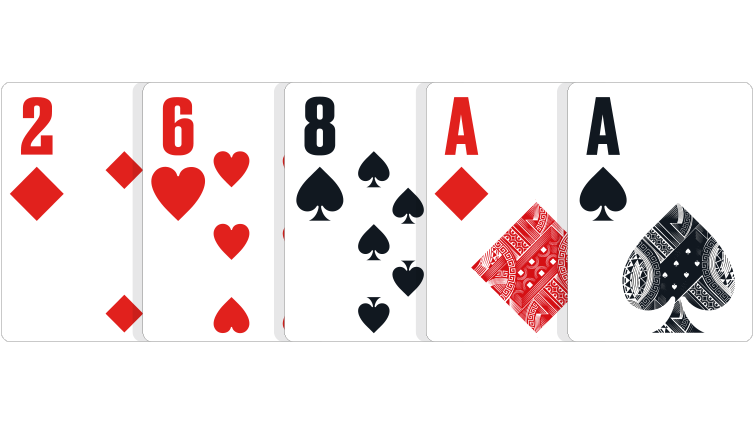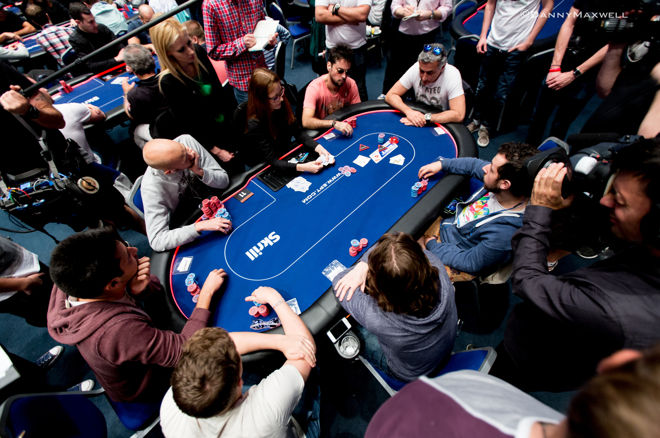Best Way To Win At Texas Holdem
There are common mistakes that no limit hold’ em poker players commit that cost them money. The list of 10 Common No Limit Hold’ Em mistakes below is not strictly geared towards the beginning poker player. If you find yourself in a downswing, it may not be just variance. Take a look at the list below to be sure you plug up any leaks.
- How To Win At Texas Holdem Cash Games
- Ultimate Texas Holdem online, free
- Best Way To Win At Texas Hold'em
- How To Win At Texas Holdem Mit
♦ TEXAS HOLDEM YOUR WAY – Stay casual with a classic, free Texas Holdem game or turn up the heat and go for the high-stakes jackpot. It’s up to you how high the stakes go! Texas Holdem Poker games for all experience and skill levels! Explosino Casino is a multi-software, multi-platform casino providing Canadian players access to thousands of Texas Holdem Para Psp top gaming from the best software in the business. Battle your way through poker tournaments or wild challenges and win millions chips! Perhaps, you are guessing where is the catch? And probably answer will amaze you, this app is absolutely 'FREE to play'. What is HOT here:. Texas Holdem, a classy way to have fun. Sit-N-Go tournaments, 9 sharks, fixed buy-in and only Big Wins!
1. Playing marginal hands out of position
Unless you are a solid post flop player, you risk getting into trouble by playing marginal hands out of position. Say you raise KJo under the gun. It folds around to the button who re-raises and you call. Flop comes AK6 rainbow.
The good news is that you hit your hand. Bad news, he may have hit his too, but he likely hit it harder than you. You showed strength raising from early position and he still re-raised pre-flop. Again, unless you are a skilled post-flop player, you stand to lose a lot of money in these situations. See our starting hands chart for an example range of hands that are playable in each table position.
2. Lack of pre-flop aggression
About half the time you put money into the pot, it should be by way of a raise. For instance, if you put money into the pot in 30% of all hands played, then in half of those instances you should be raising.
If you are using PokerTracker, the two metrics you want to look at are VP$IP (voluntarily put money in pot) and PF Raise % (pre-flop raise percentage). Your VP$IP number should be twice your PF Raise %. In the example above, you should see VP$IP=30% and PF Raise % at least 15%.
3. Not charging speculative hands
If you raise QcQsin position pre-flop and are called by the BB. The flop comes 6h4h2d. Flop is checked to you and you make a 1/2 pot continuation bet and get called. The turn is a 9c and it is checked to you again. The worst thing you can do in this spot is to check behind and give your opponent a free card to beat you.
You have a solid holding at this point and are likely ahead of your opponent. You are ahead of everything but a set a 53 (AA/KK as well, but unlikely). You should bet out here. If we assume he is on the flush draw, then he has roughly a 4:1 shot at making the flush with one card to come.
If you make a 1/2 pot sized bet here (say $10 into a $20 pot) then your opponent will be getting 3:1 odds from the pot. He will have to call $10 to win $30. It would be mathematically incorrect for your opponent to call here as his odds of winning is worse than the odds offered by the pot. See “Pot odds and how to calculate them.

Note: If your opponent thinks he can draw more money out of you on the river with his made flush (implied odds), then it makes his call correct. In that case you can bet more, 3/4 pot to compensate.
4. Inconsistent bet sizing
A big mistake that new players make is not keeping their bet sizes consistent. A classic example of this is betting low pocket pairs weaker than high pocket pairs. In order to disguise your hand you should keep your bet sizes consistent, say 3 or 4 times the big blind plus one BB per limper.
If you are at a table where you are raising 4xBB +1BB per limper and you consistently get 5 callers then feel free to increase your opening raise amount. You do not need to be consistent with your bet sizes if you can randomize your varying bet sizes. This will make it difficult for your opponent to know the meaning of your bet.
5. Not mixing up your play
Similar to the last point, if you only raise pre-flop with your premium hands (AA, KK, QQ, AK) then you are giving away too much information. To keep your opponent honest you should open up your range a bit, maybe AA-99 and AK-AJ. And/or add in some suited connectors 98s, 87s, etc. You don’t need to raise these add-in hands consistently, just enough to mix up your play.
In the example above, if you raise only super premium hands against someone who is using PokerTracker you will only see action when he has a premium hand too. He will see your PF Raise % is about 3% and he will know that you are very strong when you raise pre-flop, especially when out of position. He will only engage you when he is strong.
6. Bluffing calling stations
You can’t bluff someone who isn’t going to fold, so stop trying. If you are up against an opponent who rarely folds, don’t try to bluff them with complete air. Your hand needs to have some showdown value if you plan to proceed with aggression. If you are entering pots with solid starting hands, then you are likely to be ahead at showdown most of the time against these opponents.
7. Playing big pots with small hands
You should not be building the pot post flop with one pair hands. Say you raise pre-flop in position with JJ and are called. The flop come 963 rainbow and the pre-flop limp/caller bets into you. Proceed with caution. I would call and see what the turn brings. You can re-raise to see if they are bluffing, but if they call I would consider shutting it down. No need to build the pot any further with a one pair hand.
8. Poor bankroll management
In poker, you will experience winning streaks and losing streaks. If you are not properly bankrolled for the table stakes you are playing at, you risk going bust during a prolonged losing streak.
One great way to build your poker bankroll is with a poker room bonus and rakeback.
How To Win At Texas Holdem Cash Games
9. Not reviewing your play
Another big mistake that beginners and intermediate players alike make is not taking the time to review their play. There are tools like PokerTracker that allow you to see tons of detail about your play: how aggressive you are in different positions, do you protect your blinds, do you attempt to steal blinds sufficiently, are you overplaying top pair? This will allow you to learn from your mistakes.
You can also participate in peer review with some poker friends to get a different players perspective. You can send your online hand to us for posting in our hand analysis section and leave it to the wisdom of the community for help. .
10. Slow playing monsters
Don’t limp your premium hands. You can limp them on rare occasion to mix up your play, but as a general rule, raise them up. Say you are under the gun with AA and you limp. You get 4 more limpers and you are going to the flop 5 players deep! Do you like your chances?
If you are in late position with AA and it is limped around to you, raise it up to thin the crowd. You need to push out those small pocket pairs. Those small pocket pairs will stack you when they hit their set, or fold when you continuation bet the flop. So get them out now.
Image credit - Danny Maxwell
Whether you're playing with friends or at an online site, the goal of poker is to win. Of course, this is easier said than done today when you consider that there's a wealth of poker strategy available today. But that certainly doesn't mean your case for becoming a successful player is hopeless. This is especially the case if you read the following step-by-step guide on how to win at Texas Holdem poker.
Basic Texas Holdem Poker Strategy
Study Opponents and Focus
Image Credit - Yanning Van De Wouwer
The goal is to build a profile of everybody at the table so you can figure out what range they play in each situation. For example, if you see another player get caught trying to steal blinds with 6-5 unsuited in late position, you know that they have a wide range in these situations,
 allowing you to call against them with more hands.
allowing you to call against them with more hands.How to be Good at Poker - Intermediate Tips
Tools for learning Poker Strategy
Ultimate Texas Holdem online, free
Image credit - Raed Photography

Best Way To Win At Texas Hold'em
- Poker Articles - Abundant, and very good for learning the basics of how to win at poker. It's especially nice when articles are categorized in beginner, intermediate and advanced sections.
- Poker Books - These are a good way to get inside the head of a pro and see how they think when playing the game. Just be sure that the concepts are relevant and not outdated, though.
- Training Videos - There was an explosion of training videos in the late 2000s, as players moved away from books/articles and craved visual strategy. The great thing about training videos is that you get to see players actually playing online poker as they discuss different topics. But beware that not everybody who does training videos is a long-term winner.
- Live Streaming (Twitch) - This has become one of the most-popular ways to learn poker tips because you get to watch skilled pros in real-time. Plus, you might also be entertained by some of the better Twitch performers. Jason Somerville,Bertrand Grospellier and Jaime Staples have become stars through live streaming.
- Coaching - You can get one-on-one training by hiring a coach. The quality of coaching you get often depends on whom you hire and how much money you spend. But this option is worth pursuing if you want a good player to critique your play and explain what you need to do to get better.
- Heads-Up Displays (HUDs) - These are tools that help keep track of various stats on opponents and your own play during a session. Some online poker sites have banned these tools while others still allow you to use HUDs since they aren't technically cheating.